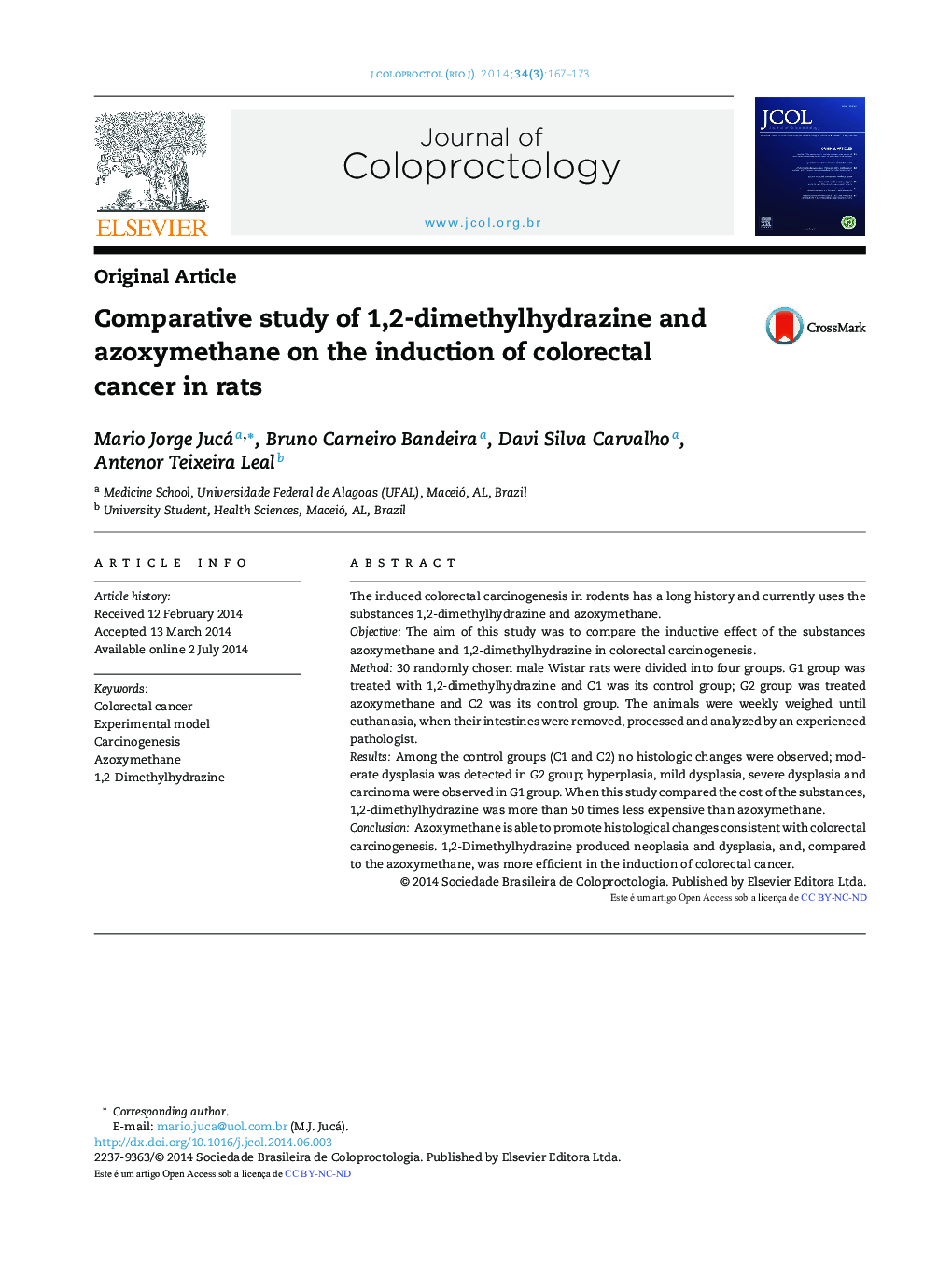| کد مقاله | کد نشریه | سال انتشار | مقاله انگلیسی | نسخه تمام متن |
|---|---|---|---|---|
| 4297124 | 1288245 | 2014 | 7 صفحه PDF | دانلود رایگان |

The induced colorectal carcinogenesis in rodents has a long history and currently uses the substances 1,2-dimethylhydrazine and azoxymethane.ObjectiveThe aim of this study was to compare the inductive effect of the substances azoxymethane and 1,2-dimethylhydrazine in colorectal carcinogenesis.Method30 randomly chosen male Wistar rats were divided into four groups. G1 group was treated with 1,2-dimethylhydrazine and C1 was its control group; G2 group was treated azoxymethane and C2 was its control group. The animals were weekly weighed until euthanasia, when their intestines were removed, processed and analyzed by an experienced pathologist.ResultsAmong the control groups (C1 and C2) no histologic changes were observed; moderate dysplasia was detected in G2 group; hyperplasia, mild dysplasia, severe dysplasia and carcinoma were observed in G1 group. When this study compared the cost of the substances, 1,2-dimethylhydrazine was more than 50 times less expensive than azoxymethane.ConclusionAzoxymethane is able to promote histological changes consistent with colorectal carcinogenesis. 1,2-Dimethylhydrazine produced neoplasia and dysplasia, and, compared to the azoxymethane, was more efficient in the induction of colorectal cancer.
ResumoA carcinogênese colorretal induzida em roedores tem longa história e utiliza, atualmente, as substâncias 1,2 dimetil-hidrazina (DMH) e azoximetano (AOM).ObjetivoComparar o efeito indutivo das substâncias AOM e DMH para o câncer colorretal (CCR).Método30 ratos Wistar machos foram randomizados em quatro grupos. O grupo G1 foi inoculado com DMH, o grupo C1 foi seu controle; G2 recebeu o AOM e C2 foi seu controle. Os animais foram pesados semanalmente até a eutanásia, quando tiveram seus intestinos retirados, processados e analisados por um patologista experiente.ResultadosOs animais dos grupos de controle apresentaram tecido colorretal normal e os animais do grupo G2 apresentaram um padrão de displasia moderada. Nas lâminas do grupo G1, foram encontradas regiões de hiperplasia, displasia leve, displasia grave, e carcinoma. Comparado o custo das substâncias AOM e DMH, este último teve um preço mais de 50 vezes menor ao do AOM.ConclusãoAOM é capaz de promover alterações histológicas compatíveis com a carcinogênese colorretal. DMH produziu neoplasia e displasia grave e, comparada ao AOM, foi mais eficiente na indução do câncer colorretal.
Journal: Journal of Coloproctology - Volume 34, Issue 3, July–September 2014, Pages 167–173